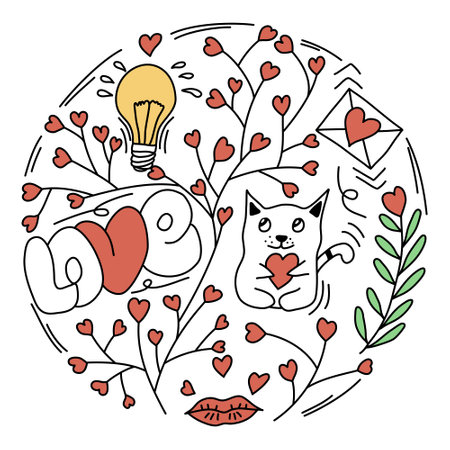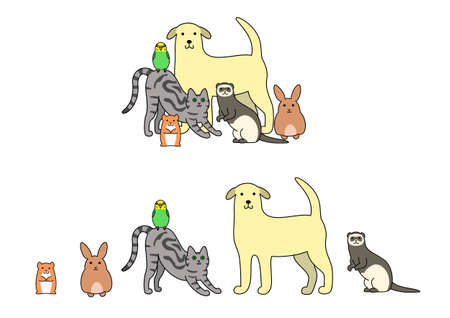Introduction to DIY Bird Cage Accessories
For those of us who share our homes with feathered companions, ensuring their happiness and wellbeing is always a top priority. One of the most rewarding ways to achieve this is by crafting our own bird cage accessories. Homemade cage accessories offer countless benefits for both pet birds and their keepers, far beyond what shop-bought items can provide. First and foremost, DIY creations allow for unparalleled enrichment; by tailoring toys and perches specifically to your bird’s preferences and natural behaviours, you foster mental stimulation and physical activity that simply cannot be matched by generic products. Customisation is another major advantage—whether your parakeet adores swings or your cockatiel prefers ladders, handmade accessories can be perfectly adapted to fit your bird’s unique needs and the dimensions of your cage. Importantly, making your own accessories using sustainable, British-sourced materials also supports eco-friendly living, reduces waste, and ensures the safety of every item introduced into your pet’s environment. In this guide, we’ll explore how embracing a do-it-yourself approach not only benefits our beloved birds but also aligns with responsible pet ownership and sustainable practices cherished across the UK.
Choosing Bird-Safe Materials: British Perspective
When crafting bespoke bird cage accessories at home, selecting the right materials is crucial for your avian companions wellbeing. In the UK, we have access to a variety of safe, sustainable resources—many of which are locally sourced and eco-friendly. Here’s how you can make thoughtful choices that ensure both safety and environmental responsibility for your feathered friends.
Locally Sourced, Non-Toxic Materials
First and foremost, it’s important to avoid any materials that could be harmful to birds. Many commercially available items may contain chemicals or finishes unsuitable for sensitive pets like parrots, finches, or budgies. Instead, opt for the following:
| Material | UK Sourcing Tips | Bird Safety Notes |
|---|---|---|
| Untreated British Hardwoods (e.g., ash, apple, beech) | Look for offcuts from local timber merchants or arborists; avoid woods treated with preservatives or pesticides. | Ensure wood is free from mould and sharp splinters; avoid toxic species such as yew or laburnum. |
| Jute Rope | Sourced from British garden centres and craft shops; check labels for 100% natural jute with no added dyes or chemical treatments. | Perfect for making swings and perches—always inspect regularly for fraying to prevent entanglement. |
| Stainless Steel Hardware | Purchase from reputable UK suppliers; opt for marine-grade (316) stainless steel for maximum rust resistance. | Avoid galvanised metals or zinc coatings as these can be toxic if chewed. |
Sustainable Choices Close to Home
The beauty of using British materials lies not just in their safety but in supporting local businesses and reducing environmental impact. By choosing resources like native hardwoods and natural fibres, you’re ensuring your bird enjoys accessories free from harsh chemicals while also keeping your carbon footprint small.
Avoiding Common Hazards
Be wary of reclaimed materials that may have unknown histories—old paint, varnish residues, or hidden metal staples can all pose threats. Always sand wood thoroughly and rinse natural fibres before use. A little extra care goes a long way in creating a healthy habitat for your special pet!

3. Sustainable Approaches: Eco-Friendly Upcycling
Creating DIY bird cage accessories at home is not only a delightful way to enrich your feathered friend’s environment, but also an opportunity to practise sustainability. For British households keen on reducing waste, upcycling everyday items can be both eco-friendly and rewarding. Before repurposing anything, ensure the materials are non-toxic and safe for birds—steer clear of treated woods, plastics with unknown additives, or anything sharp. Old cotton tea towels, linen napkins, and natural rope (like untreated hemp or jute) are excellent choices for making perches or swings. Repurpose wooden spoons or unpainted wooden pegs into ladder rungs or hanging toys, giving them a thorough wash first. Foraging locally is another sustainable option: branches from fruit trees such as apple or pear (avoiding toxic woods like yew or oak), once cleaned and dried, make sturdy natural perches. British charity shops and community swaps can be treasure troves for baskets or fabric scraps—always inspect for dyes, finishes, or loose threads that could pose risks. When sourcing new materials, favour UK-made products with FSC certification or items labelled as organic and untreated. Remember, less is more; choose a few quality upcycled pieces over cluttering your bird’s space. Finally, always supervise your pet’s interaction with new accessories to ensure safety and comfort.
4. Popular DIY Accessories: Examples and Tutorials
Step-by-Step Guide to Homemade Bird Cage Enrichments
If you’re keen to enhance your bird’s environment with sustainable, safe, and British-made accessories, look no further! Below are easy-to-follow tutorials using everyday materials commonly found in UK homes or gardens. Each project focuses on enrichment, safety, and eco-friendly principles, perfect for keeping your feathered friends happy.
DIY Perches from Native Woods
- Materials Needed: Untreated branches from native trees (such as apple, hazel, or willow), sandpaper, stainless steel wire/twine (UK-sourced), scissors.
- Instructions:
- Choose a healthy, lichen-free branch about 1-2 cm in diameter.
- Wash and scrub the branch with hot water—no chemicals needed.
- Sand any rough edges smooth.
- Cut to cage width with a small handsaw.
- Attach using wire or twine through drilled holes at each end; secure outside the bars for safety.
Foraging Trays with Recycled Materials
- Materials Needed: Clean cardboard egg boxes (free from ink/dyes), shredded paper (from post/office waste), small safe UK-grown treats (like millet or chopped apples).
- Instructions:
- Tear egg box into shallow trays.
- Fill sections with shredded paper and mix in treats.
- Place in the cage base or clip to bars for an interactive foraging activity.
Sisal Rope Swings: A British Classic
- Materials Needed: Natural sisal rope (unbleached, untreated, made in the UK if possible), a wooden dowel or branch, scissors.
- Instructions:
- Cut a length of rope (approx. 50cm) and tie both ends securely to either side of the branch or dowel.
- Knot firmly; check for loose fibres and trim as necessary.
- Suspend swing from the top of the cage ensuring it’s stable and accessible for your bird.
Cork and Willow Chew Toys
- Materials Needed: Natural wine corks (free from additives), fresh willow twigs (locally sourced), food-grade stainless steel skewers (UK standard).
- Instructions:
- Pierce corks with skewer and alternate threading with willow twigs.
- Knot at both ends so pieces don’t slip off.
- Hang inside the cage at beak-height as a chew-and-play toy.
Quick Reference Table: Materials & Where to Find Them in the UK
| Accessory Type | Main Materials | Where to Source Locally |
|---|---|---|
| Naturally Wood Perch | Apple/Hazel/Willow Branches | Your garden, local parks (with permission) |
| Foraging Tray | Egg Cartons, Shredded Paper | Recycling bins, home office waste |
| Sisal Swing | Sisal Rope, Wooden Dowel/Branch | B&Q, Wickes, garden centres |
| Cork Chew Toy | Naturally Sourced Corks, Willow Twigs | Your recycling bin, countryside walks (collect fallen branches only) |
The beauty of DIY bird accessories lies in their adaptability and sustainability—plus you’ll have peace of mind knowing every material is safe and locally sourced. Your birds will love exploring new textures and shapes while you enjoy a little creative upcycling!
5. Health and Safety Considerations
When creating DIY bird cage accessories at home, the health and safety of your feathered companions must always come first. British pet birds—such as budgerigars, cockatiels, canaries, and finches—have unique needs that should guide your choice of materials and designs. Begin by ensuring all materials are free from harmful chemicals, varnishes, or paints not specifically labelled as bird-safe. Avoid using metals that could rust or contain zinc and lead, which are toxic to birds commonly kept in the UK.
Hygiene is equally crucial. All natural elements like wood branches or pine cones should be sourced responsibly from unpolluted areas and thoroughly cleaned before use. Baking wooden items in the oven at a low temperature can help eliminate pests and bacteria. Washable fabrics, if used for hammocks or swings, should be machine-washable and laundered regularly to prevent the build-up of droppings and bacteria.
Regularly inspect all DIY accessories for sharp edges or splinters that might injure your bird’s delicate feet or beaks. Softwoods such as untreated willow, hazel, or apple wood from UK gardens are generally safe options but must be free from pesticides and garden chemicals. Secure all fixtures well to prevent accidents caused by loose fittings or knots.
Consider the specific needs of your bird species: smaller British birds may become entangled in loose threads or large gaps, so ensure every accessory is appropriately sized and constructed. Toys should be challenging but not hazardous; avoid anything that could trap toes, beaks, or wings. Rotating toys and perches regularly helps maintain a hygienic environment and keeps your birds mentally stimulated.
Lastly, observe your bird’s interaction with any new accessory closely during the first few days. Remove anything that causes stress or shows signs of wear and tear immediately. By prioritising safety and hygiene with locally-sourced, sustainable materials, you’ll create an enriching environment tailored to the wellbeing of Britain’s beloved pet birds.
6. Involving the Community: British Bird-Keeping Networks
One of the greatest joys of crafting DIY bird cage accessories at home is the opportunity to connect with fellow British bird enthusiasts. Sharing your creative projects, sourcing sustainable materials, and gathering fresh inspiration become even more meaningful when you are part of a supportive community. Across the UK, passionate keepers of budgies, canaries, finches, and parrots have come together through various networks—both online and offline—to swap ideas and resources.
Local Bird Clubs and Workshops
Many towns and villages across Britain boast their own avian societies or bird clubs. These groups often host regular meetings, craft workshops, and talks where members showcase their homemade toys or perches. Attending these gatherings is a fantastic way to learn about regionally sourced materials—like willow from Somerset or untreated hazel branches from local woodlands—and to see how others adapt traditional British crafts for avian enrichment.
Online Forums and Social Media Groups
If you’re looking for advice on safe finishes for wooden accessories or want feedback on your latest recycled rope swing, UK-based online forums such as The Parrot Society UK or Avian Forums provide a wealth of knowledge. Facebook groups dedicated to British bird-keeping communities are particularly lively; members regularly post photos of their DIY setups, trade tips about local suppliers, and arrange swap events for excess materials like untreated twine or upcycled ceramics.
Swap Events and Material Exchanges
Another uniquely British tradition that’s gaining popularity among pet owners is the swap meet. Whether organised by your local club or spontaneously arranged via social media, these events allow you to exchange surplus accessories or sustainable crafting materials with other bird lovers. It’s an eco-friendly alternative to buying new products and a brilliant way to discover locally available items—think driftwood from Cornish beaches or baskets woven from Kentish willow.
Sharing Inspiration Responsibly
When sharing your creations and sourcing ideas from others, always prioritise safety. Make sure any advice you offer about natural materials follows UK guidelines for non-toxic woods and treatments. By pooling your knowledge within these supportive networks, you help raise the standard of care across the entire British bird-keeping community.
Conclusion: Building a Thriving DIY Culture
Involving yourself in Britain’s vibrant bird-keeping networks not only enriches your own experience but also contributes to a culture of sustainability and creativity. Whether you’re swapping stories at a Yorkshire club meeting or exchanging eco-friendly rope via an online forum, connecting with others makes every handcrafted perch or toy that much more rewarding—for both keeper and feathered friend.


